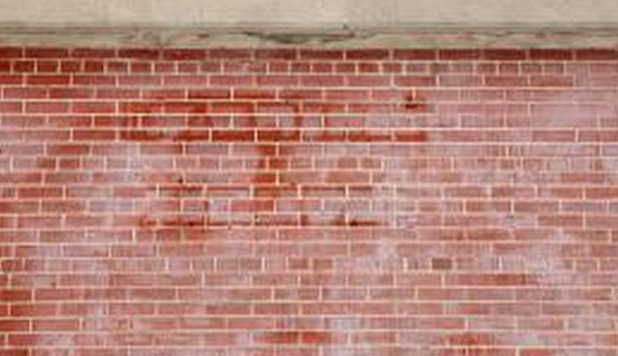Types of stain on buildings
A stain, or staining, is the visible discolouration of a surface caused by the interaction of two dissimilar materials.
Stains can be accidental, intentional, or can be the result of the deterioration of materials, such as the rust which forms on iron or the patina that develops on bronze.
Stained glass is a type of glazing material that is intentionally coloured (stained), either by the addition of metallic salts during the manufacturing process, or by having colour applied to its surface and then being fired in a kiln to fuse the colour to the glass. For more information, see Stained glass. Timber can also be stained to alter its appearance.
The severity of unintentional stains depends on the type of material affected. For example, even small stains can cause serious damage to sensitive furnishings such as carpets, curtains and upholstery.
In relation to buildings and structures, some types of staining can be seen as adding character, however it may be an indication of an underlying problem:
- 'Tide marks’ on walls can be indicators of damp problems, particularly in older buildings which may have been constructed without a damp-proof membrane.
- Pattern staining occurs when a substance settles or emerges on the internal or external surface of a material. There are various causes of pattern staining, such as pollution deposition, salt expulsion, staining from other materials, and so on.
- Algae soiling is a growth on buildings that is caused by organic biological deposition, such as moss and lichens. Usually, these cause damage to building surfaces, and should be rectified.
- In some instances, the appearance of bricks is affected by the development of stains. These may originate from materials in the brick or mortar, from adjacent materials or from outside sources such as cleaning agents. Each has a particular chemical composition and a unique means of removal. Identification of the origin of the stain is the first step in returning brickwork to its proper appearance.
- Stains are often misidentified or mistaken for efflorescence. When correctly identified, efflorescence and stains can generally be removed, whereas inappropriate correction methods may result in further staining or damage to the brickwork.
- Lime staining [see top image], also known as lime run-off, describes an effect that can come about when excess water flows through cementatious material. This water can dissolve calcium hydroxide (free lime) which is then deposited on the brick face. The calcium hydroxide is a soluble form of lime which is created as Portland cement hydrates. The initial staining can be removed with water and brushing before it carbonates. Once reaction has taken place, an acid solution will be necessary because the hard crust that forms when the lime has started to carbonate is much harder to remove.
- Vanadium stains: These occur when vanadium oxide and sulfates are dissolved and result in a solution that may be quite acidic.
- Iron staining: Usually appears as a stain to the mortar joint and can come from metal imbedded in the structure.
- Manganese staining: Manifests itself as a dark brown or black staining concentrated along mortar joints.
- White scum: Silicate deposits which appear as uneven white or grey stain on the brick face or mortar joints.
- Acid burn: Unsightly and uneven yellow/gold staining caused by cleaning brickwork with muriatic acid.
- Stains from external sources: Such as pollution, organic growth or runoff. Usually, the source and composition of these stains is obvious. Organic stains can include algae, mould or other organisms.
Stain removal is a type of maintenance procedure, and a common technique is jet washing with chemical cleaning agents.
[edit] Related articles on Designing Buildings
Featured articles and news
Moisture, fire safety and emerging trends in living walls
How wet is your wall?
Current policy explained and newly published consultation by the UK and Welsh Governments.
British architecture 1919–39. Book review.
Conservation of listed prefabs in Moseley.
Energy industry calls for urgent reform.
Heritage staff wellbeing at work survey.
A five minute introduction.
50th Golden anniversary ECA Edmundson apprentice award
Showcasing the very best electrotechnical and engineering services for half a century.
Welsh government consults on HRBs and reg changes
Seeking feedback on a new regulatory regime and a broad range of issues.
CIOB Client Guide (2nd edition) March 2025
Free download covering statutory dutyholder roles under the Building Safety Act and much more.
AI and automation in 3D modelling and spatial design
Can almost half of design development tasks be automated?
Minister quizzed, as responsibility transfers to MHCLG and BSR publishes new building control guidance.
UK environmental regulations reform 2025
Amid wider new approaches to ensure regulators and regulation support growth.
The maintenance challenge of tenements.
BSRIA Statutory Compliance Inspection Checklist
BG80/2025 now significantly updated to include requirements related to important changes in legislation.
Shortlist for the 2025 Roofscape Design Awards
Talent and innovation showcase announcement from the trussed rafter industry.
























Comments
Very helpufl. Thanks :-)